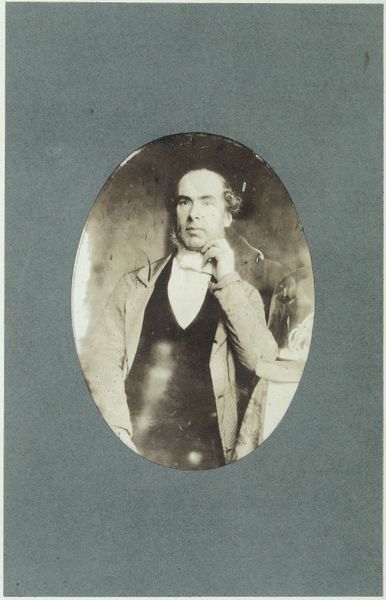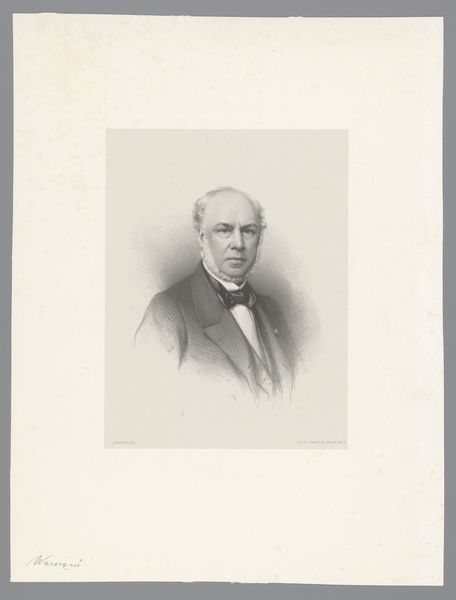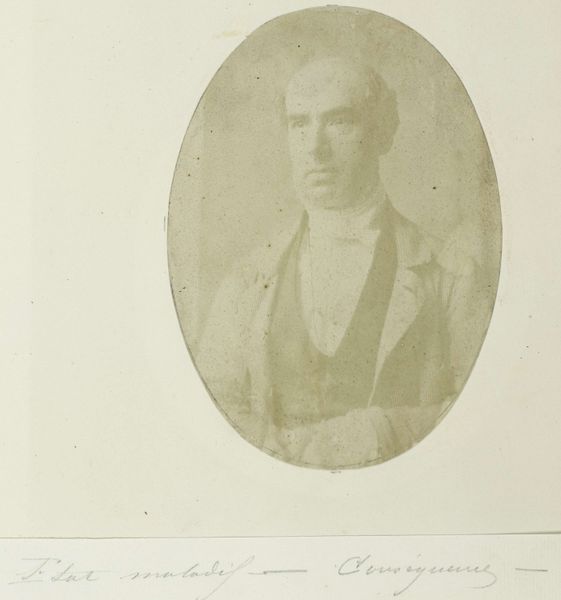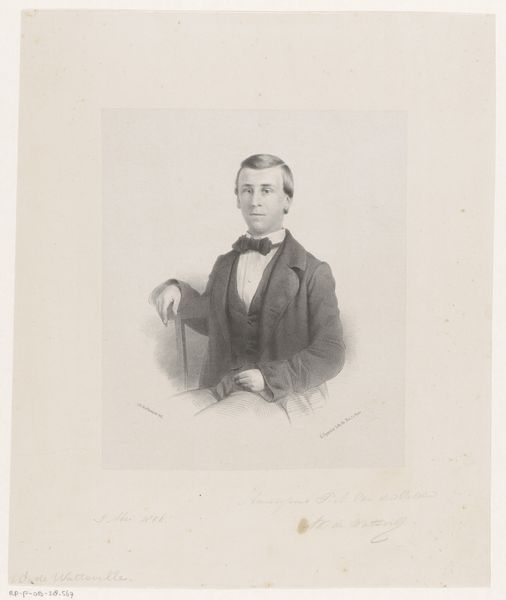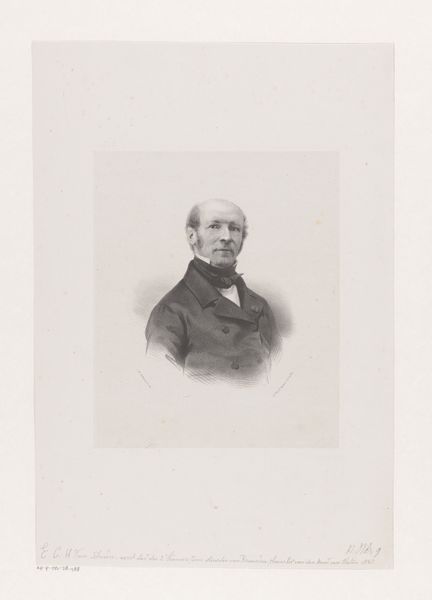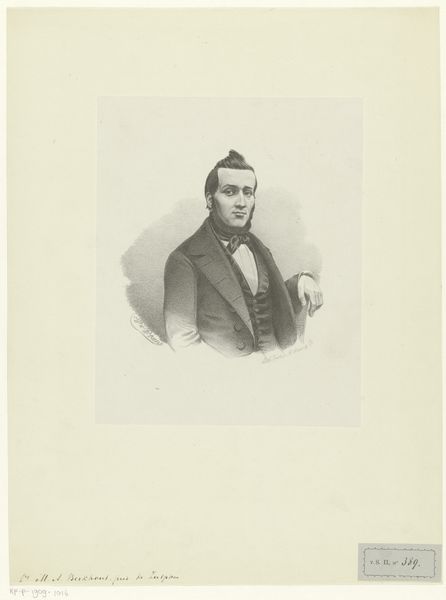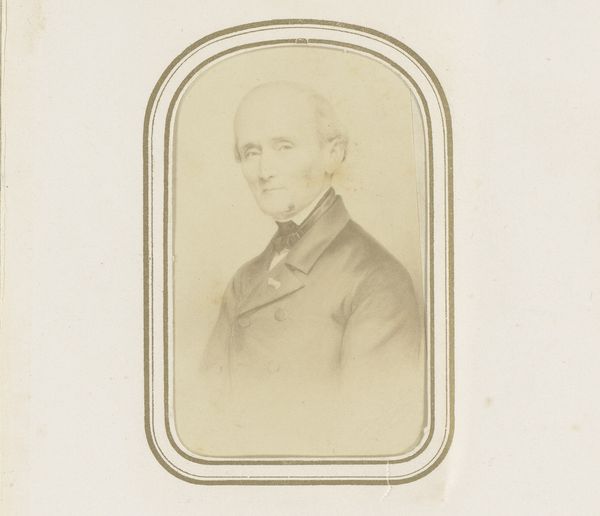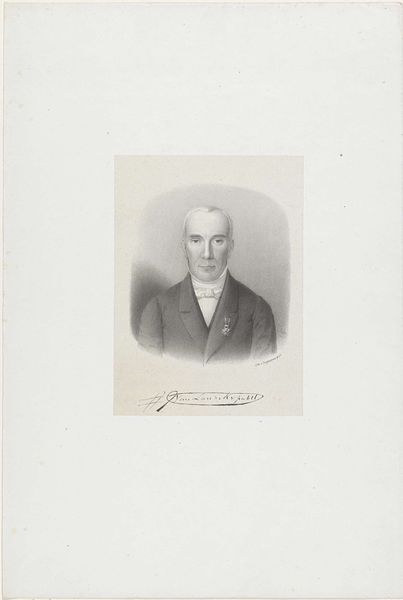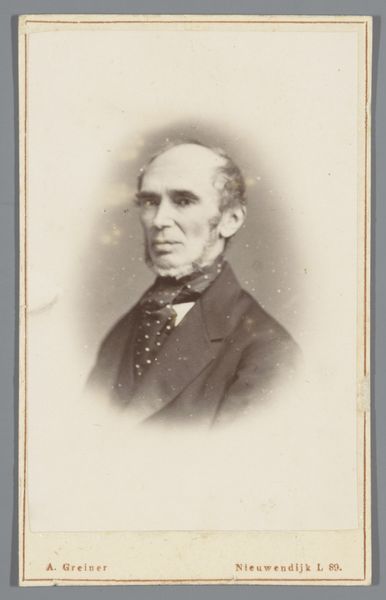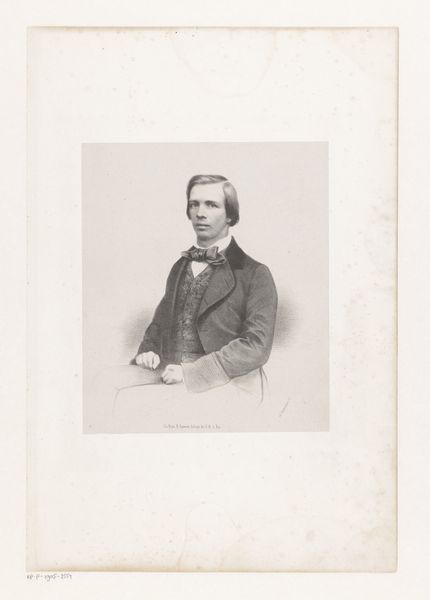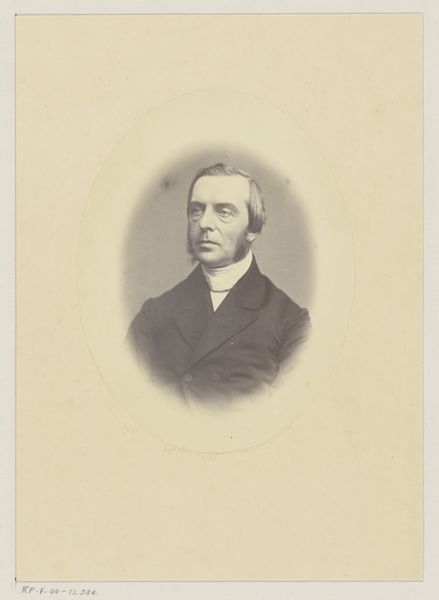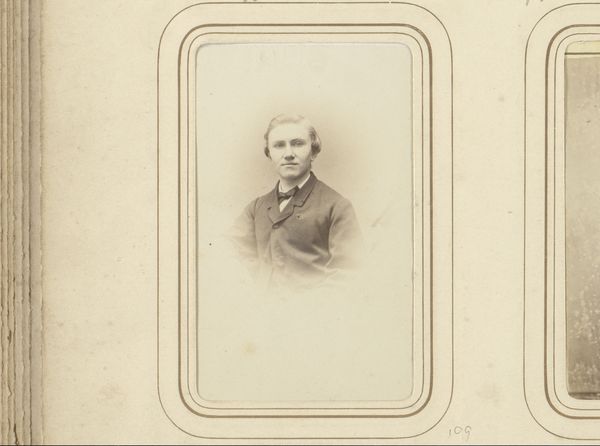
daguerreotype, photography
#
portrait
#
daguerreotype
#
photography
#
historical photography
Dimensions: height 127 mm, width 112 mm
Copyright: Rijks Museum: Open Domain
Curator: Let's turn our attention to a self-portrait by Eduard Isaac Asser, created around 1852. The title, handwritten below, reads 'Revenu a l'etat normal.' It's a daguerreotype, a very early form of photography. Editor: My first impression? Melancholy. The oval format, the soft focus… it gives him this almost lunar, floating quality. There's a delicate stillness in his gaze that's profoundly moving. Curator: Daguerreotypes, of course, have a unique presence. The image is incredibly detailed yet ethereal, almost ghostly. Asser, a lawyer by trade, was one of the first Dutch photographers. Editor: A lawyer moonlighting as a photographer! That says a lot. The way he crosses his hands... it's like he's trying to contain something. Perhaps a bit of the 'normal' he refers to in the title is that careful self-possession. Curator: It's interesting that you note the melancholic mood, I feel a controlled sadness but not completely overcome, but in light of the handwritten note at the bottom, the artist alludes to "returning to normal," potentially post some challenging times, what he thought those looked like at least. Editor: 'Returning to normal’ sounds like he has weathered something. Is there some history here that is related to that written expression? Perhaps a struggle with the artistic soul against a more prosaic profession of lawyer. You see how those stern lips have just the faintest upturn at the corner... I think I see that "artistic soul" within the image of this formal man. Curator: As a lawyer, I imagine he thought that art was one avenue into a part of life he could not approach otherwise. He uses a different part of his brain to come to his idea of normality and what should exist within that reality, or even as an ideal for himself. Perhaps through his work with art he realized more about himself. Editor: Exactly! It's like this image encapsulates a quiet personal transformation, a return maybe, but to something far more nuanced than just plain normality. It is, as he tells himself with the message included below the image. Curator: Thank you for pointing those details out! We began to appreciate Asser's vision together through the artwork itself, to think deeply of what normality may be and also how to view oneself in this world. I see something similar in his artistic efforts. Editor: And isn’t that what great art is all about, recognizing your transformation in time within it?
Comments
No comments
Be the first to comment and join the conversation on the ultimate creative platform.
